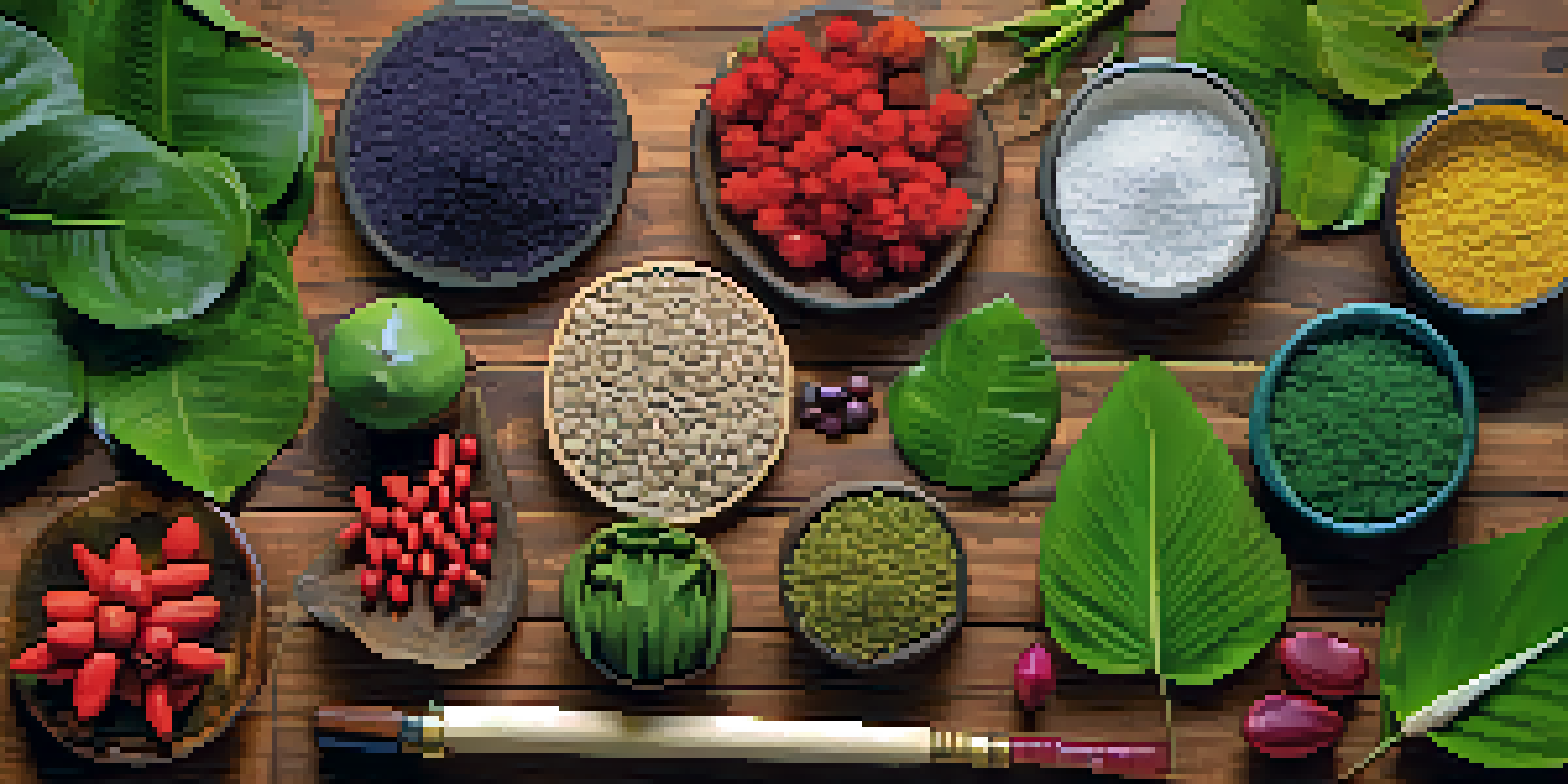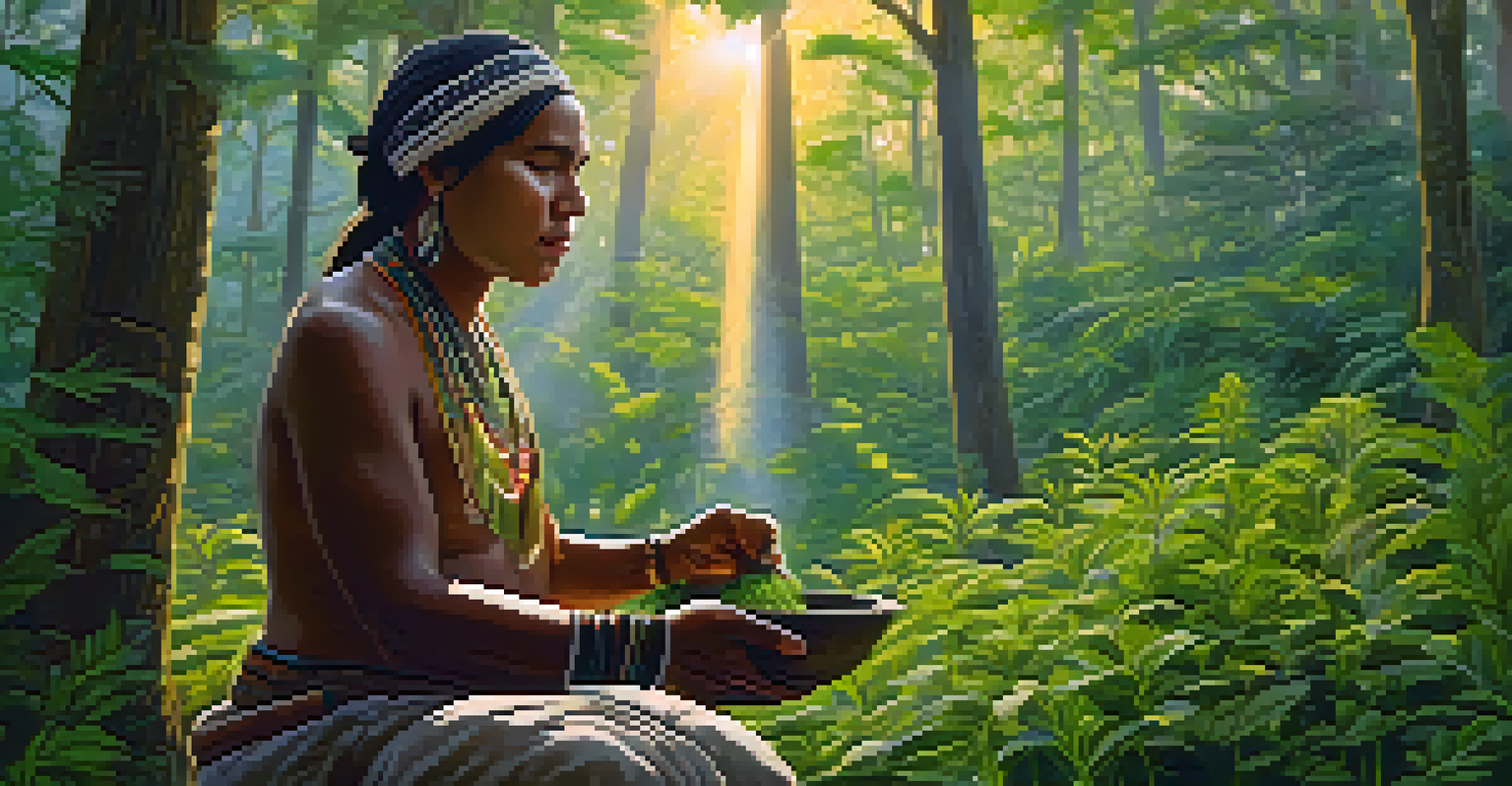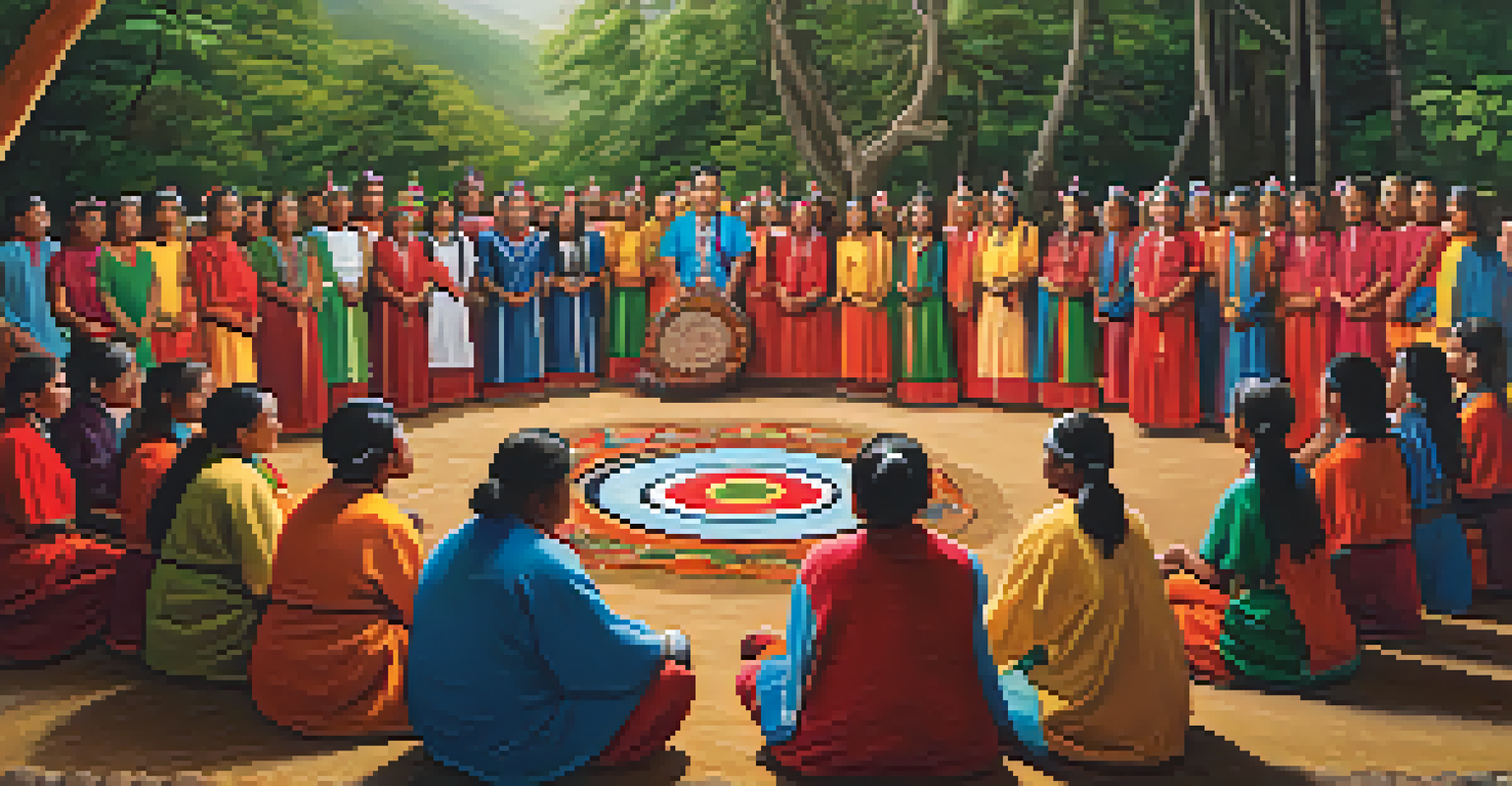The Role of Brazil's Flora in Indigenous Medicine

Understanding Indigenous Medicine and Its Foundations
Indigenous medicine is deeply rooted in the cultural practices of Brazil's native peoples. It encompasses a holistic approach that considers the physical, spiritual, and environmental aspects of health. This traditional system is often passed down through generations, highlighting the importance of plants and their medicinal properties.
In every walk with nature one receives far more than he seeks.
For Indigenous communities, the connection to nature is not just about using resources; it's about respecting and nurturing the ecosystem. Many of these communities view themselves as guardians of the land, which informs their practices and beliefs regarding health and healing. Their knowledge of flora is both practical and spiritual, intertwining medicine with cultural identity.
In Brazil, where biodiversity is incredibly rich, the flora serves as a vital resource for Indigenous healers. They carefully select plants based on their historical uses and the specific ailments they aim to treat, showcasing the depth of their botanical knowledge. This relationship with nature is fundamental to their understanding of wellness.
Biodiversity in Brazil: A Treasure Trove of Medicinal Plants
Brazil is home to the Amazon rainforest, one of the most biodiverse regions on the planet. This incredible variety of plant life offers vast potential for medicinal applications, with Indigenous tribes having identified countless species for healing purposes. From the towering trees to the smallest shrubs, each plant plays a role in their medicinal repertoire.

Many of these plants have unique properties that can be used to treat ailments such as infections, inflammation, and even chronic diseases. For example, the copaiba tree provides a resin known for its anti-inflammatory and pain-relieving qualities. Such plants are not just important for healing; they also reflect the intricate relationship between humans and their environment.
Indigenous Medicine's Holistic Approach
Indigenous medicine integrates physical, spiritual, and environmental health, emphasizing a deep connection to nature and cultural identity.
Importantly, the knowledge of these plants is often localized, meaning that different tribes may use the same species in varied ways. This rich tapestry of knowledge underscores the significance of preserving biodiversity, as it holds the key to understanding and utilizing these natural resources effectively.
Cultural Significance of Plants in Indigenous Healing
In Indigenous cultures, plants are not merely seen as tools for healing; they are imbued with spiritual significance. Many tribes believe that plants possess spirits that must be respected and honored, creating a profound connection between the healer and the flora. This reverence shapes their practices and rituals surrounding medicine.
The greatest threat to our planet is the belief that someone else will save it.
For instance, the use of ayahuasca, a traditional brew made from specific plants, goes beyond physical healing. It is often used in ceremonies to promote spiritual insight and personal growth. This example illustrates how medicine in Indigenous cultures transcends the physical realm, integrating mental and spiritual health.
The cultural narratives surrounding these plants are vital for their preservation. As younger generations learn about these traditions, they not only gain knowledge of healing practices but also foster a sense of identity and belonging within their communities. This cultural transmission is essential for the survival of both the plants and the practices associated with them.
Traditional Healing Practices and Their Methodologies
Indigenous healing practices are diverse and often involve various methodologies, including herbal remedies, rituals, and communal gatherings. Healers, known as shamans or medicine people, play a pivotal role in diagnosing and treating ailments using their extensive knowledge of plants. They possess a unique ability to interpret symptoms and choose the appropriate remedies from the surrounding flora.
The preparation of these remedies can involve complex processes, such as grinding, boiling, or fermenting plants to extract their medicinal properties. Each method is rooted in tradition and reflects an understanding of the plants' characteristics. For example, infusions might be used for quick relief, while tinctures may be prepared for longer-lasting effects.
Biodiversity's Role in Healing
The rich biodiversity of Brazil provides Indigenous communities with a vast array of medicinal plants essential for their healing practices.
Communal healing rituals also emphasize the importance of social support in the healing process. By gathering to share stories, pray, or sing, community members create an environment that fosters emotional and spiritual well-being, reinforcing the idea that health is a collective experience.
Challenges Facing Indigenous Medicinal Practices Today
Despite their rich traditions, Indigenous medicinal practices face numerous challenges in today's world. Deforestation, climate change, and loss of biodiversity threaten the very ecosystems that provide these vital resources. As natural habitats shrink, the plants that Indigenous communities rely on for healing may become scarce or entirely lost.
Additionally, the encroachment of modern medicine often undermines traditional practices. This can lead to a generational gap, where younger members of Indigenous communities may turn to pharmaceutical solutions instead of seeking knowledge from their elders. The loss of traditional knowledge can harm both cultural identity and health outcomes.
Efforts to protect and promote Indigenous medicinal knowledge are crucial. Collaborations between Indigenous communities and researchers can help document these practices, ensuring they are not forgotten. By valuing and respecting these traditions, we can work towards a more sustainable future for both people and plants.
The Importance of Conservation for Future Generations
Conservation plays a vital role in safeguarding the rich biodiversity that underpins Indigenous medicine. By protecting ecosystems, we ensure that the plants used for healing remain available for future generations. This is not just about preserving flora; it’s about sustaining the cultural practices and knowledge that have evolved alongside them.
Initiatives that promote sustainable harvesting and ethical use of plants can help balance the needs of Indigenous communities with environmental conservation. Education and awareness-raising about the significance of these plants can also foster a deeper appreciation among broader society. This connection can lead to greater advocacy for conservation efforts.
Conservation for Cultural Survival
Protecting ecosystems is crucial not only for preserving medicinal plants but also for sustaining the cultural knowledge and practices of Indigenous communities.
Ultimately, the preservation of both plant species and Indigenous knowledge is interconnected. As we recognize the value of these ancient practices, we can support initiatives that empower Indigenous communities to continue their healing traditions while also protecting the environment. This holistic approach benefits all of humanity.
Embracing Indigenous Knowledge in Modern Medicine
The intersection of Indigenous knowledge and modern medicine presents exciting opportunities for enhancing healthcare. As researchers explore the properties of medicinal plants used by Indigenous healers, there is potential for discovering new treatments and therapies. This collaboration can lead to innovative solutions that respect traditional practices while also benefiting broader society.
For instance, the study of plants like the guaraná berry, known for its stimulating effects, has led to its incorporation into energy drinks and supplements. Such examples highlight how Indigenous knowledge can influence modern wellness trends, providing insights into natural remedies that have stood the test of time.

Embracing this knowledge requires a respectful approach that acknowledges the contributions of Indigenous communities. By fostering partnerships and ensuring fair use of traditional knowledge, we can create a more inclusive healthcare landscape that honors the wisdom of those who have cared for these lands for centuries.